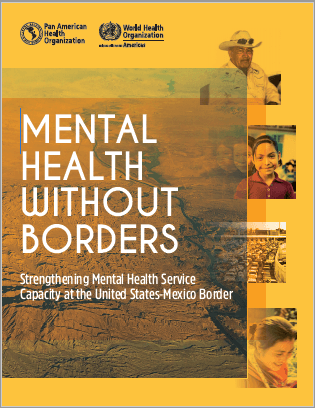Mental and neurological disorders are among the leading causes of poor health and disability worldwide, with 300 million people suffering from depression alone. However, between 76% and 85% of people receive no treatment for their illness. In the United States/Mexico border region, these conditions affect 1 in every 5 persons with suicide rates reaching 12.6 per 100,000 people in the US and 5.3 per 100,000 in Mexico.
Border communities face stressors that can significantly increase the risk of developing mental health problems. Some of these factors include poverty, migration and barriers to health care – both financial (lack of health insurance, low income), and structural (cultural and language).
In 2014 an alliance was established between the following organizations: the Pan American Health Organization (PAHO); the Substance Abuse and Mental Health Services Administration (SAMHSA); the U.S. Department of Health and Human Services; the Secretaria de Salud (Ministry of Health) and National Commission for Mental Health (CONSAME, acronym in Spanish) in Mexico; and the Border Health Commission on both sides of the border.
A situation analysis and needs assessment were conducted in three pairs of cities (Tijuana-San Diego, Laredo-Nuevo Laredo and Reynosa McAllen) using the WHO Assessment Instrument for Mental Health Systems (AIMS). From this needs assessment a collaboration and work plan were initiated that have lasted four years, from 2014 to 2017. Some key achievements from this work are:
- On the Mexican side of the border, 286 community health workers were trained from the cities of: Tijuana, Palomas, Ciudad Juarez, Ojinaga, Reynosa, Matamoros and Nuevo Laredo.
- The CONSAME in Mexico added the mhGAP-IG as one of their indicators of mental health performance for all 32 states in Mexico, thanks to this initiative.
- To date, in the U.S., 270 community health workers from 9 cities in 4 border states (Texas, New Mexico, Arizona and California) have been trained in mhGAP.
- In the 10 border states, a total of 347 primary health care personnel have been trained using the mhGAP-IG.




